Buzzwords for the new paradigm
Here are the Forest Bathing Club, we’re aware that business-as-usual isn’t working — in fact it’s a complete disaster. Pretty much everything we (as westernizers, people of empire) have been doing is resulting in unhealthy land and unhealthy people. We simply cannot go on for much longer or else we will all become toast.
Climate change is here. Our soils are degrading. More pesticides than ever before are being pumped into food. Society is at the verge of collapse and already has collapsed for many people with the realities of wildfires here on the West Coast and covid everywhere. It’s a lot to grapple with and it can be paralyzing.
But here’s the thing: we can change. All the solutions are here. It’s just time to get to work. It’s time to put our egos and personal issues aside to join together. When we work to heal the planet, we also heal ourselves. It’s one in the same thing because we are nature!
Beyond the eco-paralysis, there’s a lot of work to do (and grief to feel). So let’s get started.
A new paradigm calls for a new vocabulary. Here are some words to get us started. These are very brief introductions to very vast subjects.
Drawdown:
Drawdown is about getting to the point where the amount of greenhouse gases in the atmosphere is declining instead of increase. There are lots of known solutions to climate change that are safe, equitable, and low tech.
Trees are really great carbon sequesters so planting more trees is an important way to lower greenhouse gases. Another big one is to restore the soil. Instead of plowing and using pesticides, support the soil biology with things like cover crops and compost!
Check out Project Drawdown for more on climate solutions and Kiss The Ground for more information on restoring soil.
Regeneration:
This is about making something better than it was before. Instead of “leave no trace,” the idea is to leave a positive impact.
An example of regenerative practices is transforming degraded land into healthy food forests. John Liu made a film about re-greening the Loess Plateau in China that is all about regenerating the land and restoring biodiversity.
Permaculture:
This term was coined by Bill Mollison in Australia. It refers to permanent agriculture, or a way of growing food and tending land that does not degrade the land but actually regenerates it while creating food sovereignty.
Permaculture takes a systems design approach and has a set of principles that work for any location and any scale. The first principle. “observe (and interact),” is a lot like forest bathing. It’s the idea of just being to the land and listening to it before doing anything. Imagine what the world would be like if we took a year to observe and learn before doing any big projects! A great way to practice this principle is through nature drawing and journaling.
Permaculture is about relationships between everything (as opposed to just focused on the self) and cultivates an ecological state of mind. In this mind state, we are intimately connected to the more-than-human-world.
A popular way to learn about permaculture is through a permaculture designs course. I had the joy of taking a permaculture course with Siskiyou Permaculture and learned a lot from Hazel, one of the co-inventors of permaculture. I recommend anyone who is ready to take their connection to nature to the next level to find a course to take. Check out the Permaculture Institute of North America.
It’s important to note that indigenous cultures all over the world lived permaculture, wild tending the land, and that we need to support indigenous land management and restore traditional ecological knowledge (TEK). We have a lot to learn from Native Americans about how to live on this land in a good way,
Social Permaculture:
When we take the principles of permaculture and apply them to communities, we get social permaculture: the application of permaculture principles to human relationships, communities, and social systems. Adam Brock gets into this in his book Change Here Now: Solutions for Personal and Community Transformation.
Social forestry:
The basis of social forestry is that our forests are lonely and we’ve lost our way of living with the forest. It’s a way of life that cares for the land and supports healthy human culture at the same time. Seasonal work cycles, festivals, working with hand tools, and land stewardship is all a part of the social forestry web.
(I’m currently in the process of editing Tom Ward’s (aka Hazel) manuscript on social forestry and have signed up for a social forestry internship this winter).
May these buzzwords be the beginning of a new way of being and may we all care of ourselves, each other, and the whole planet.
